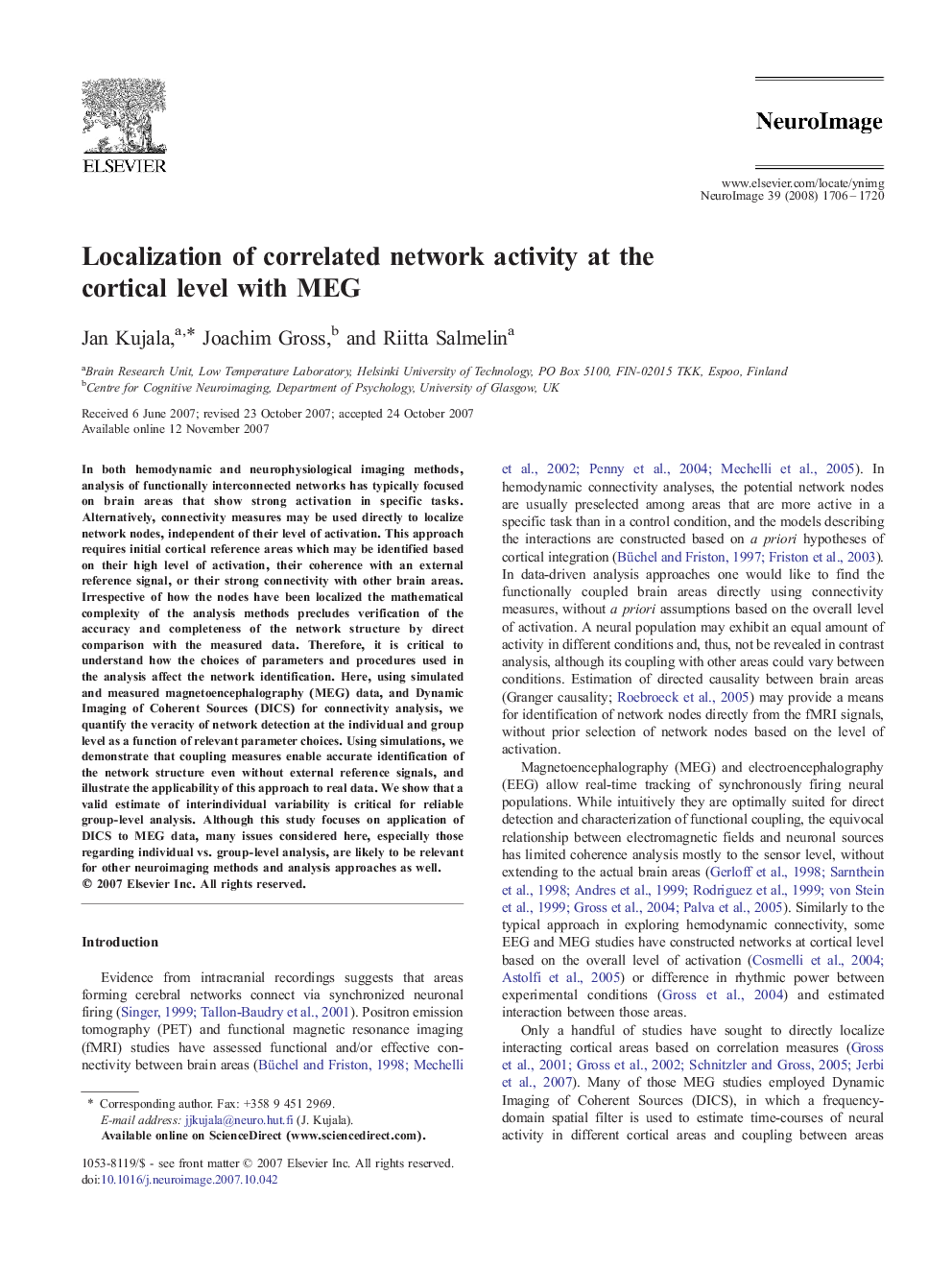| Article ID | Journal | Published Year | Pages | File Type |
|---|---|---|---|---|
| 3073383 | NeuroImage | 2008 | 15 Pages |
In both hemodynamic and neurophysiological imaging methods, analysis of functionally interconnected networks has typically focused on brain areas that show strong activation in specific tasks. Alternatively, connectivity measures may be used directly to localize network nodes, independent of their level of activation. This approach requires initial cortical reference areas which may be identified based on their high level of activation, their coherence with an external reference signal, or their strong connectivity with other brain areas. Irrespective of how the nodes have been localized the mathematical complexity of the analysis methods precludes verification of the accuracy and completeness of the network structure by direct comparison with the measured data. Therefore, it is critical to understand how the choices of parameters and procedures used in the analysis affect the network identification. Here, using simulated and measured magnetoencephalography (MEG) data, and Dynamic Imaging of Coherent Sources (DICS) for connectivity analysis, we quantify the veracity of network detection at the individual and group level as a function of relevant parameter choices. Using simulations, we demonstrate that coupling measures enable accurate identification of the network structure even without external reference signals, and illustrate the applicability of this approach to real data. We show that a valid estimate of interindividual variability is critical for reliable group-level analysis. Although this study focuses on application of DICS to MEG data, many issues considered here, especially those regarding individual vs. group-level analysis, are likely to be relevant for other neuroimaging methods and analysis approaches as well.
